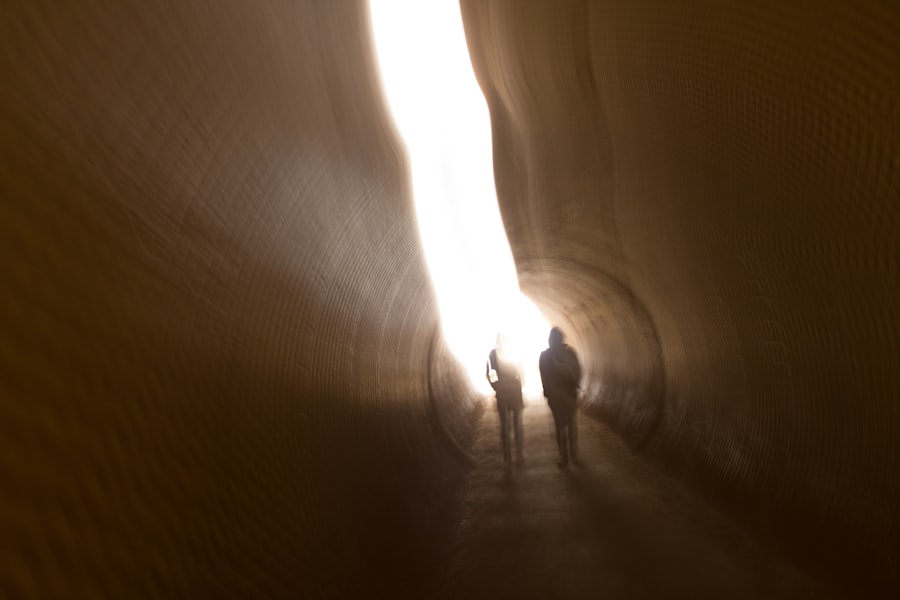The Drake Passage, a body of water that separates South America from Antarctica, is renowned for its tumultuous seas and unpredictable weather. Named after the English explorer Sir Francis Drake, who navigated these waters in the late 16th century, the passage has become a focal point for adventurers, researchers, and maritime enthusiasts alike. Stretching approximately 600 miles, it serves as a critical route for vessels traveling between the Atlantic and Pacific Oceans.
The Drake Passage is not merely a geographical feature; it embodies the spirit of exploration and the challenges posed by nature. As one of the most notorious maritime routes in the world, the Drake Passage has captured the imagination of many. Its reputation for fierce storms and high waves has led to a mix of awe and trepidation among those who dare to traverse its waters.
The passage is often described as the “Sailor’s Grave” due to its perilous conditions, yet it also offers a unique opportunity to witness some of the most breathtaking landscapes and diverse wildlife on the planet. For those willing to brave its challenges, the Drake Passage promises an unforgettable journey filled with adventure and discovery.
Key Takeaways
- The Drake Passage is a treacherous body of water located between South America’s Cape Horn and the South Shetland Islands of Antarctica.
- The geography and climate of the Drake Passage are characterized by strong winds, rough seas, and unpredictable weather patterns, making it one of the most challenging maritime routes in the world.
- The historical significance of the Drake Passage is marked by the exploits of early explorers and the strategic importance of the route for scientific research and exploration of Antarctica.
- Navigating the Drake Passage poses numerous challenges and dangers, including extreme weather conditions, icebergs, and the notorious “Drake Shake” experienced by sailors.
- When preparing for a journey through the Drake Passage, it is important to choose a sturdy vessel, pack appropriate gear, and be mentally and physically prepared for the rigors of the crossing.
Understanding the geography and climate of the Drake Passage
The geography of the Drake Passage is characterized by its deep waters and strong currents, which are influenced by the confluence of several oceanic systems. The passage connects the southern tip of South America, specifically Cape Horn, to the Antarctic Peninsula. This unique positioning creates a funnel effect, where water from the Atlantic Ocean meets that of the Pacific, resulting in turbulent seas.
The depth of the passage varies significantly, with some areas plunging over 3,000 meters, creating an environment that is both rich in marine life and challenging for navigation. The climate in the Drake Passage is equally formidable. It is known for its extreme variability, with conditions that can change rapidly from calm to stormy within a matter of hours.
The region experiences strong winds, particularly during the winter months, which can lead to towering waves and hazardous sailing conditions. Temperatures can also fluctuate dramatically, with icy waters that can chill even the hardiest of sailors.
Historical significance of the Drake Passage

The historical significance of the Drake Passage cannot be overstated. It has long been a critical route for explorers and traders seeking to navigate between the Atlantic and Pacific Oceans. Sir Francis Drake’s expedition in 1578 marked one of the first recorded crossings of this treacherous waterway, paving the way for future explorers.
His journey not only demonstrated the potential for maritime trade routes but also highlighted the challenges posed by the passage’s unpredictable nature. Throughout history, the Drake Passage has served as a gateway for scientific exploration as well. In the 19th century, whalers and sealers ventured into these waters, drawn by the abundance of marine resources.
Later, during the Age of Exploration, numerous expeditions sought to chart unknown territories and study the unique ecosystems found in and around the passage. Today, it remains a vital area for scientific research, particularly in studies related to climate change and marine biology, as researchers continue to uncover its secrets.
Challenges and dangers of navigating the Drake Passage
| Challenges and Dangers of Navigating the Drake Passage |
|---|
| Rough seas and strong winds |
| Potential for icebergs and ice floes |
| Narrow and unpredictable navigational route |
| Isolation and limited access to assistance |
| Extreme weather conditions |
| Potential for seasickness and motion discomfort |
Navigating the Drake Passage presents numerous challenges that can test even the most experienced mariners. The combination of strong currents, unpredictable weather patterns, and towering waves creates an environment that demands respect and caution. Sailors must be prepared for sudden storms that can arise without warning, often leading to dangerous conditions that can jeopardize both vessel and crew.
The passage’s reputation for rough seas has led many to regard it as one of the most challenging maritime routes in existence. In addition to natural hazards, there are logistical challenges associated with navigating this remote region. The isolation of the Drake Passage means that assistance may be far away in case of an emergency.
Vessels must be well-equipped with navigational tools and safety gear to handle potential crises. Moreover, understanding local maritime regulations and environmental protections is crucial for ensuring safe passage through these pristine waters.
Tips for preparing for a journey through the Drake Passage
Preparation is key when embarking on a journey through the Drake Passage. First and foremost, prospective travelers should conduct thorough research on weather patterns and seasonal conditions. Understanding when to travel can make a significant difference in terms of safety and comfort.
The summer months, from November to March, typically offer milder weather and calmer seas, making them more favorable for crossing. In addition to timing, travelers should ensure they have appropriate gear for their journey. This includes waterproof clothing, sturdy footwear, and essential safety equipment such as life jackets and emergency beacons.
It is also advisable to pack supplies such as seasickness medication, as many individuals may experience discomfort due to the passage’s notorious swells. Finally, having a well-thought-out itinerary that includes contingency plans can help mitigate risks associated with unexpected changes in weather or navigation challenges.
Choosing the right vessel for crossing the Drake Passage

Selecting an appropriate vessel is crucial for anyone planning to cross the Drake Passage. The type of boat chosen can significantly impact both safety and comfort during the journey. Larger vessels equipped with stabilizers are often preferred due to their ability to handle rough seas more effectively than smaller boats.
Cruise ships designed specifically for polar expeditions are popular choices among travelers seeking a more comfortable experience while still allowing for exploration. For those considering a more adventurous approach, sailing on smaller yachts or expedition vessels can provide a unique perspective on this remarkable region. However, these options require a higher level of skill and experience in navigating challenging waters.
Safety measures and precautions for navigating the Drake Passage
Safety should always be a top priority when navigating the Drake Passage. Mariners must adhere to strict safety protocols to minimize risks associated with this challenging environment. Regular safety drills should be conducted to ensure that all crew members are familiar with emergency procedures, including man-overboard scenarios and evacuation protocols.
Additionally, maintaining open communication with other vessels in the area can enhance safety during transit. Utilizing modern technology such as GPS tracking systems and satellite communication devices can provide real-time updates on weather conditions and potential hazards. It is also advisable to have a comprehensive first aid kit on board and ensure that crew members are trained in basic medical response techniques.
Wildlife and natural wonders of the Drake Passage
Despite its reputation for treacherous conditions, the Drake Passage is home to an astonishing array of wildlife and natural wonders that captivate those who venture through its waters. The nutrient-rich currents support diverse marine ecosystems, attracting various species of fish, seals, and seabirds. Travelers may encounter majestic albatrosses gliding gracefully above the waves or playful dolphins swimming alongside their vessels.
The passage also serves as a critical migratory route for whales, including humpback and orca species that can often be spotted during crossings. The breathtaking landscapes surrounding the passage offer stunning views of icebergs and glaciers that create a dramatic backdrop against the turbulent sea. For nature enthusiasts and wildlife lovers alike, crossing the Drake Passage presents an unparalleled opportunity to witness some of Earth’s most remarkable natural phenomena.
Navigation and route planning through the Drake Passage
Effective navigation through the Drake Passage requires careful planning and consideration of various factors that can influence travel routes. Mariners must take into account prevailing winds, ocean currents, and potential weather systems when charting their course. Utilizing advanced navigational tools such as radar systems and electronic charts can enhance accuracy while reducing risks associated with traditional navigation methods.
Additionally, understanding local maritime regulations is essential for ensuring compliance with environmental protections in this sensitive region. Mariners should familiarize themselves with designated shipping lanes and any restrictions related to wildlife conservation efforts. Collaborating with experienced local guides or charter companies can also provide valuable insights into optimal routes based on current conditions.
Testimonials and experiences from those who have crossed the Drake Passage
Many individuals who have crossed the Drake Passage share stories filled with both excitement and trepidation. Sailors often recount tales of battling fierce storms while navigating towering waves that seemed insurmountable at times. Yet amidst these challenges, there are moments of awe when encountering breathtaking vistas or witnessing marine life up close.
Travelers on expedition cruises frequently describe their experiences as transformative journeys that deepen their appreciation for nature’s power and beauty. Testimonials highlight not only the thrill of adventure but also a sense of camaraderie among fellow travelers who bond over shared experiences in this remarkable environment. These personal accounts serve as a testament to both the challenges faced and the rewards reaped from crossing one of the world’s most iconic maritime routes.
The future of navigating the Drake Passage: advancements and developments
As technology continues to evolve, so too does navigation through challenging environments like the Drake Passage. Advancements in vessel design have led to more stable ships capable of handling rough seas with greater ease than ever before. Innovations in navigational technology allow for real-time monitoring of weather patterns and ocean conditions, enhancing safety for those traversing these waters.
Moreover, increased awareness surrounding environmental conservation has prompted discussions about sustainable practices in maritime travel through sensitive regions like the Drake Passage. Efforts are underway to implement stricter regulations aimed at protecting marine ecosystems while still allowing for exploration and adventure tourism. As interest in this remarkable passage grows, so too does the responsibility to navigate it safely and sustainably for future generations to enjoy its wonders.
Cruising the Drake Passage is an adventure that many travelers dream of, offering a unique opportunity to experience the raw beauty and challenging conditions of one of the world’s most notorious bodies of water. For those interested in learning more about the geographical and historical significance of this journey, a related article can be found on MyGeoQuest. This article delves into the fascinating aspects of the Drake Passage, providing insights into its role in global ocean currents and its impact on maritime exploration. To explore this topic further, you can visit the article by clicking on this link.
WATCH NOW! Drake Passage: Earth’s Deadliest Waters Revealed
FAQs
What is the Drake Passage?
The Drake Passage is the body of water between the southern tip of South America and the northern tip of the Antarctic Peninsula. It is known for its rough seas and challenging sailing conditions.
What is cruising the Drake Passage like?
Cruising the Drake Passage can be a thrilling and adventurous experience due to the unpredictable weather and rough seas. It is often considered one of the most challenging sea voyages in the world.
What can I expect to see while cruising the Drake Passage?
While cruising the Drake Passage, passengers may have the opportunity to see a variety of wildlife, including seabirds, whales, and possibly even penguins. The scenery of icebergs and dramatic landscapes is also a highlight of the journey.
How long does it take to cruise the Drake Passage?
The duration of a cruise through the Drake Passage can vary, but it typically takes around 2-3 days to cross the passage, depending on the weather and sailing conditions.
What should I pack for a cruise through the Drake Passage?
It is important to pack warm and waterproof clothing, as well as sturdy, non-slip footwear. Seasickness medication is also recommended, as the passage is known for its rough seas.
Are there any safety concerns when cruising the Drake Passage?
Due to the challenging sailing conditions, it is important for passengers to follow safety guidelines provided by the cruise ship crew. It is also recommended to have travel insurance that covers emergency medical evacuation in case of any unforeseen circumstances.
